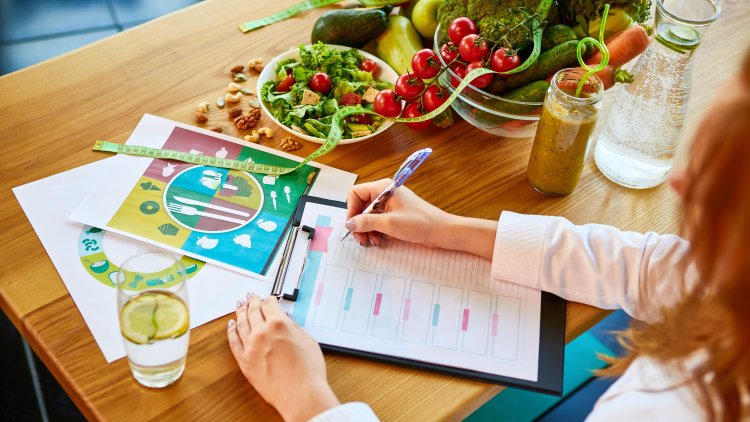Why you should not eat between main meals
Toxic ferments and other chemicals - aldehydes, alcohols, amines, and esters - begin to form in the food, which affects the brain, liver, kidneys, and other sensitive tissues.

The stomach is an organ that is 25 cm long and can hold four liters of solid or liquid food. It was created for mechanical decomposition, but also for the chemical digestion of food. The walls of the stomach consist of many folds or villi, and the inside of the stomach is covered by a thick layer of mucus. If this protective layer did not exist, the stomach would digest itself - the gastric juices would digest it along with the food. The lower part of the stomach is the so-called pylorus (opening) through which digested food flows from the stomach into the duodenum. It is equipped with a circular, thickened layer of smooth muscle that controls the release of stomach contents through the pyloric opening into the duodenum and at the same time prevents the return of stomach contents back.
What happens in the stomach when we eat?
The stomach processes food in three phases - the first is chemical, in the second peristalsis occurs (muscle contractions that achieve the mixing of the contents - food in the stomach), and the third phase involves moving the digested food.
First, the upper sphincter (a type of muscle at the upper part of the stomach) closes and gastric acids are secreted, the most effective of which is hydrochloric acid, which is a very strong solvent and is used in industrial production to dissolve metals. The acids slowly concentrate and surround the food, which takes about forty minutes. Then follows the second stage of digestion, the walls of the stomach begin to contract and expand, in order to ensure a good mechanical crushing of the food. When all the food in the stomach reaches the same pH value and is evenly digested, the third stage of digestion occurs - the movement of food in small quantities into the duodenum. Under normal circumstances, this process takes four hours, while the digestion of very fatty foods takes up to six hours.
The stomach also needs rest, so after the digestion process, we should give it at least one hour of rest. That is why we recommend that there is an optimal break of at least five hours between the main meals (from the end of one to the beginning of the other).
By observing the digestion process using an X-ray image, doctors came to some shocking findings. A person who eats a few chocolate cubes every two hours after a regular breakfast has more than half of the contents of breakfast in his stomach after 13.5 hours.
In another study, students were given cereal, toast, fruit, and an egg for breakfast. Special tests confirmed that after four hours the students have empty stomachs. For several days, the students received the same breakfast, and then, on another occasion, after two hours, they were given another sandwich with peanut butter or a slice of melon cake with milk. The result showed that even after 6-9 hours, part of the breakfast was still in the stomach. One student was given a piece of chocolate twice after breakfast in the morning and the same was repeated in the afternoon. The result showed that even after 13 hours from breakfast, part of the content remained in the stomach.
What happens when two hours after a meal, new food arrives in the stomach?
Thanks to the arrival of new food, the pH value of the stomach environment changes immediately. The stomach stops its activities and all three stages of digestion occur again - from the concentration of digestive juices, through peristalsis to the exit of digested food from the stomach. Food that has been digested before goes through all three stages again - similar to when we stop the washing process in the washing machine, add more laundry, and start the program from the beginning.
What happens to old, already partially digested food?
Toxic ferments and other chemicals - aldehydes, alcohols, amines, and esters - begin to form in the food, which affects the brain, liver, kidneys, and other sensitive tissues. Productivity decreases and the person feels a bit dazed, has problems with concentration, and can become irritable. As a result of the fermentation of the previous food, a state similar to that after consuming alcohol occurs. The constant presence of food in the stomach forces the stomach to produce large amounts of acid and digestive enzymes that dissolve not only the food but also the delicate lining of the stomach walls. Over time, inflammation occurs - gastritis and even stomach ulcers.
When eaten between main meals, an acidic reaction remains in the mouth for a long time, which later leads to caries. For two hours after a meal, minerals are drained or washed from the teeth (so-called demineralization), and only after the end of that period do the minerals return.
Snacks also contribute to overweight and obesity, especially because sweet and fatty foods are most often consumed between main meals. After a meal, the level of triglycerides also increases. The result is increased platelet adhesion - "sticking" of blood platelets, which increases the risk of blood clots (heart attack, ischemic stroke). Each meal stimulates the pancreas to produce insulin. If it produces insulin too often, it becomes overloaded and can cause low blood sugar - hypoglycemia. It can be the first symptom of diabetes that sometimes appears several years later.
Post by: Rinna James





























